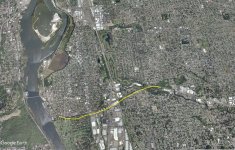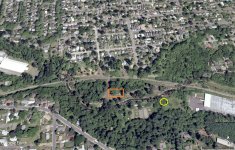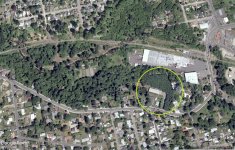Crow
Silver Member
- Jan 28, 2005
- 3,684
- 10,308
- Detector(s) used
- ONES THAT GO BEEP! :-)
- Primary Interest:
- Other
Occasionally shifting though many treasure yarns some times you come across ones by accident. And a happy accident it was that Old Crow finds an intriguing Worm of story to peck his beak into. Not that really need to any more but old habits do die hard?
Here is treasure I find interesting and intriguing? Yet I have no set opinion on the story being real, fake or still there?
Here picture of and alleged treasure map below.

The above alleged treasure map This treasure map, associated with the Civil War era, can be found in the archives of the Oregon Historical Society Research Library. Courtesy of the Oregon Historical Society Research Library.
he archives of the Oregon Historical Society Research Library in Portland house many treasures—but only one honest-to-goodness treasure map. ( Or so it is believed? )
“It is an odd thing,” says research services manager Scott Daniels of Manuscript number 2039 a scrap of creased and stained tracing cloth kept in the library’s climate-controlled vault. Unfolded, the document is 6 inches tall and 18 inches wide, covered from edge to edge on one side with long strings of blunt capital letters written in blue pencil, and a crude map sketched in blue and yellow. On the far left, there’s a port with a building topped by a tall spire on its shore. And on the right, there is a barn and two slashes that seem to be gravestones. In black ink, someone has written “MONEY”—highlighting two separate caches of $3,000 each. In February 1862, when the map seems to indicate the treasure was buried, $6,000 would have been a fortune, several years wages for the average worker back then?
But if it was in gold coins it could be worth quite fortune today?
Yet like with all treasure maps there is catch? Down town Portland is a wildly different place today than 1864. If it was real and not already recovered the original caches may be under modern development or land fill somewhere?
You can see the full story at
Atlas Obscura Portland Oregon buried treasure Map
Anyway it might be fun seeing what people come up with?
Cheers Crow
Here is treasure I find interesting and intriguing? Yet I have no set opinion on the story being real, fake or still there?
Here picture of and alleged treasure map below.
The above alleged treasure map This treasure map, associated with the Civil War era, can be found in the archives of the Oregon Historical Society Research Library. Courtesy of the Oregon Historical Society Research Library.
he archives of the Oregon Historical Society Research Library in Portland house many treasures—but only one honest-to-goodness treasure map. ( Or so it is believed? )
“It is an odd thing,” says research services manager Scott Daniels of Manuscript number 2039 a scrap of creased and stained tracing cloth kept in the library’s climate-controlled vault. Unfolded, the document is 6 inches tall and 18 inches wide, covered from edge to edge on one side with long strings of blunt capital letters written in blue pencil, and a crude map sketched in blue and yellow. On the far left, there’s a port with a building topped by a tall spire on its shore. And on the right, there is a barn and two slashes that seem to be gravestones. In black ink, someone has written “MONEY”—highlighting two separate caches of $3,000 each. In February 1862, when the map seems to indicate the treasure was buried, $6,000 would have been a fortune, several years wages for the average worker back then?
But if it was in gold coins it could be worth quite fortune today?
Yet like with all treasure maps there is catch? Down town Portland is a wildly different place today than 1864. If it was real and not already recovered the original caches may be under modern development or land fill somewhere?
You can see the full story at
Atlas Obscura Portland Oregon buried treasure Map
Anyway it might be fun seeing what people come up with?
Cheers Crow








